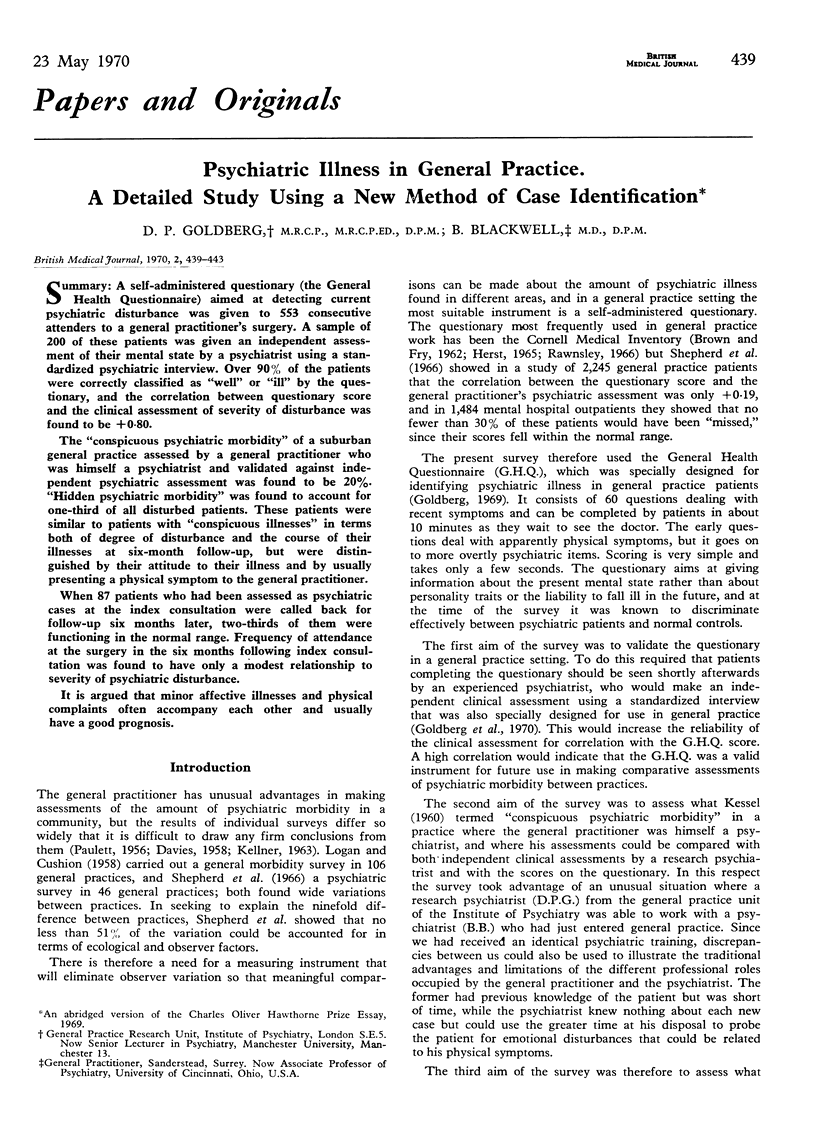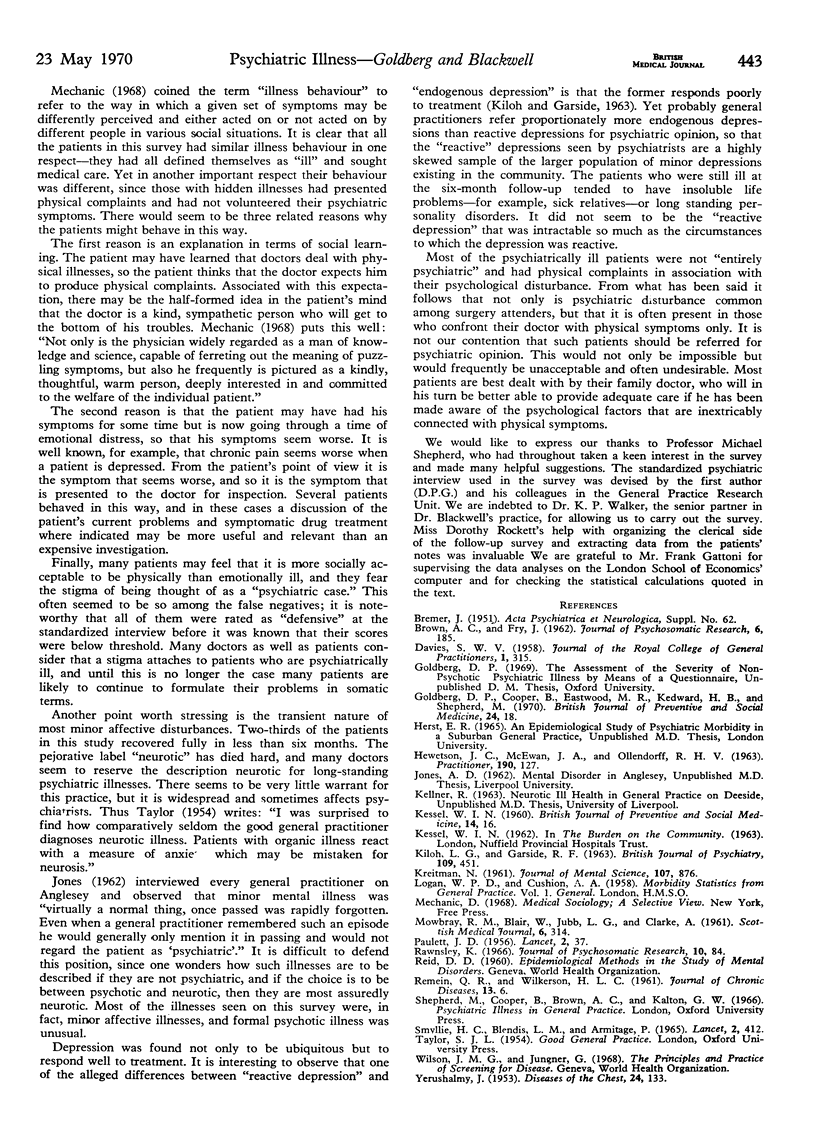Abstract
A self-administered questionary (the General Health Questionnaire) aimed at detecting current psychiatric disturbance was given to 553 consecutive attenders to a general practitioner's surgery. A sample of 200 of these patients was given an independent assessment of their mental state by a psychiatrist using a standardized psychiatric interview. Over 90% of the patients were correctly classified as “well” or “ill” by the questionary, and the correlation between questionary score and the clinical assessment of severity of disturbance was found to be +0·80.
The “conspicuous psychiatric morbidity” of a suburban general practice assessed by a general practitioner who was himself a psychiatrist and validated against independent psychiatric assessment was found to be 20%. “Hidden psychiatric morbidity” was found to account for one-third of all disturbed patients. These patients were similar to patients with “conspicuous illnesses” in terms both of degree of disturbance and the course of their illnesses at six-month follow-up, but were distinguished by their attitude to their illness and by usually presenting a physical symptom to the general practitioner.
When 87 patients who had been assessed as psychiatric cases at the index consultation were called back for follow-up six months later, two-thirds of them were functioning in the normal range. Frequency of attendance at the surgery in the six months following index consultation was found to have only a modest relationship to severity of psychiatric disturbance.
It is argued that minor affective illnesses and physical complaints often accompany each other and usually have a good prognosis.
Full text
PDF




Selected References
These references are in PubMed. This may not be the complete list of references from this article.
- Davies S. W. V. A year in General Practice. J Coll Gen Pract Res Newsl. 1958 Nov;1(4):315–329. [PMC free article] [PubMed] [Google Scholar]
- HEWETSON J. C., McEWAN J. A., OLLENDORFF R. H. The incidence of psychiatric disorders in gereral practice. Practitioner. 1963 Jan;190:127–132. [PubMed] [Google Scholar]
- KILOH L. G., GARSIDE R. F. The independence of neurotic depression and endogenous depression. Br J Psychiatry. 1963 Jul;109:451–463. doi: 10.1192/bjp.109.461.451. [DOI] [PubMed] [Google Scholar]
- KREITMAN N. The reliability of psychiatric diagnosis. J Ment Sci. 1961 Sep;107:876–886. doi: 10.1192/bjp.107.450.876. [DOI] [PubMed] [Google Scholar]
- MOWBRAY R. M., BLAIR W., JUBB L. G., CLARKE A. The general practitioner's attitude to psychiatry. Scott Med J. 1961 Jul;6:314–321. doi: 10.1177/003693306100600705. [DOI] [PubMed] [Google Scholar]
- PAULETT J. D. Neurotic ill health; a study in general practice. Lancet. 1956 Jul 7;271(6932):37–38. doi: 10.1016/s0140-6736(56)91404-0. [DOI] [PubMed] [Google Scholar]
- Rawnsley K. Congruence of independent measures of psychiatric morbidity. J Psychosom Res. 1966 Jul;10(1):84–93. doi: 10.1016/0022-3999(66)90142-5. [DOI] [PubMed] [Google Scholar]
- SMYLLIE H. C., BLENDIS L. M., ARMITAGE P. OBSERVER DISAGREEMENT IN PHYSICAL SIGNS OF THE RESPIRATORY SYSTEM. Lancet. 1965 Aug 28;2(7409):412–413. doi: 10.1016/s0140-6736(65)90759-2. [DOI] [PubMed] [Google Scholar]
- YERUSHALMY J. The reliability of chest roentgenography and its clinical implications. Dis Chest. 1953 Aug;24(2):133–147. doi: 10.1378/chest.24.2.133. [DOI] [PubMed] [Google Scholar]


